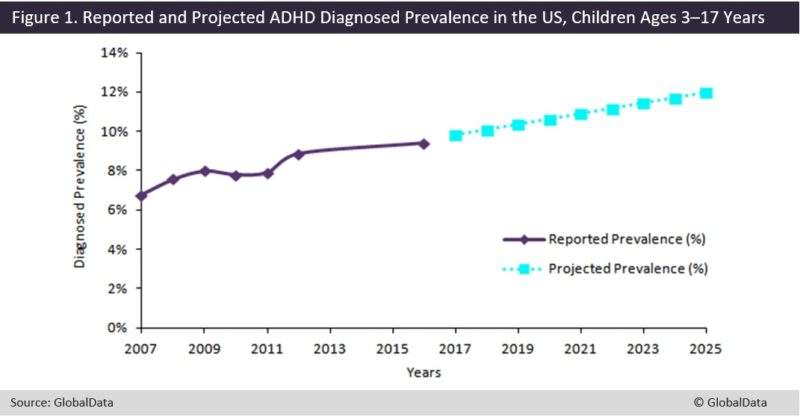Attention-deficit/hyperactivity disorder (ADHD) is a common childhood disorder characterized by abnormal levels of impulsivity and inattention that can hinder a person’s ability to function properly in their everyday life. ADHD is especially prominent in the US, which has two to three times higher diagnosed prevalence than other Western European markets and Japan. According to GlobalData’s epidemiological forecast for ADHD, the disease burden for ADHD is expected to increase in the near future. A study published earlier this year by Danielson and colleagues in the Journal of Clinical Child & Adolescent Psychology further supports GlobalData’s estimates, showing that the prevalence of diagnosed ADHD in the US in ages 2–17 has reached over 9%.
This recent study on ADHD prevalence in the US was conducted as part of the 2016 National Survey of Children’s Health, and is a continuation of a series of national-level surveys aimed to examine the physical and emotional health of children. Since the previous survey in this series was conducted in 2012, this study is an important update on the status of mental health diseases in children with diseases such as ADHD. GlobalData’s ADHD epidemiology report, EpiCast Report: Attention-Deficit/Hyperactivity Disorder – Epidemiology Forecast to 2024, incorporated data up to 2012, at which time the diagnosed prevalence of ADHD in children ages 3–17 was shown to be around 8.9%. Based on historical increases in ADHD prevalence, GlobalData believed that prevalence would continue to increase and conservatively estimated that the prevalence of ADHD in children would increase to 9.1% by 2016. The study from Danielson and colleagues reported that the national prevalence of diagnosed ADHD prevalence was slightly higher in 2016 than GlobalData’s estimate, at 9.4% in children ages 2–17, corresponding to 6.1 million cases. Given this updated statistic, GlobalData believes that ADHD prevalence may reach almost 12% by 2025, corresponding to around 7.5 million children. ADHD will continue to be a major healthcare issue in the US for children.
Figure 1 below presents the historical reported national ADHD diagnosed prevalence and GlobalData’s projection using the newest data from the 2016 National Survey of Children’s Health.








